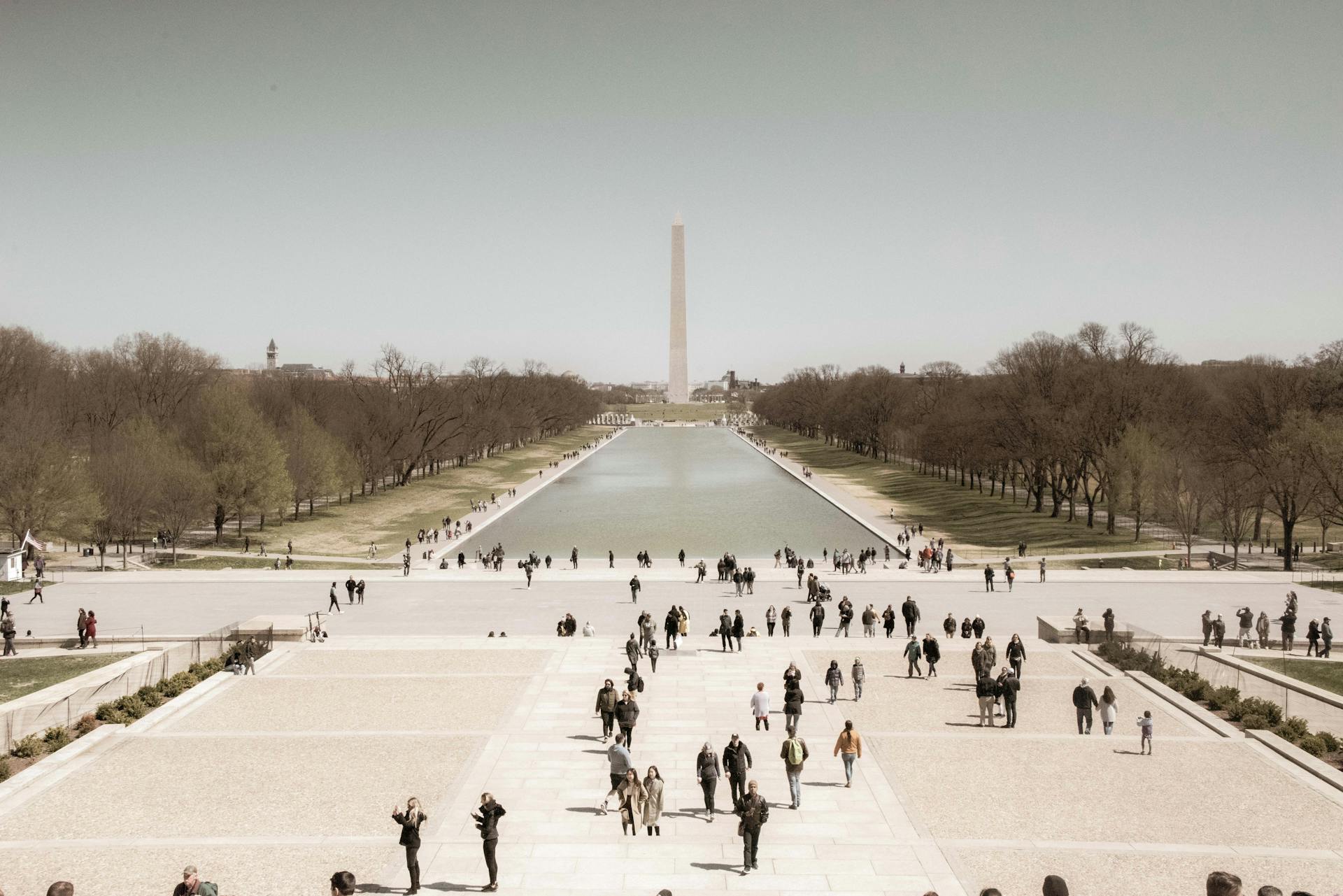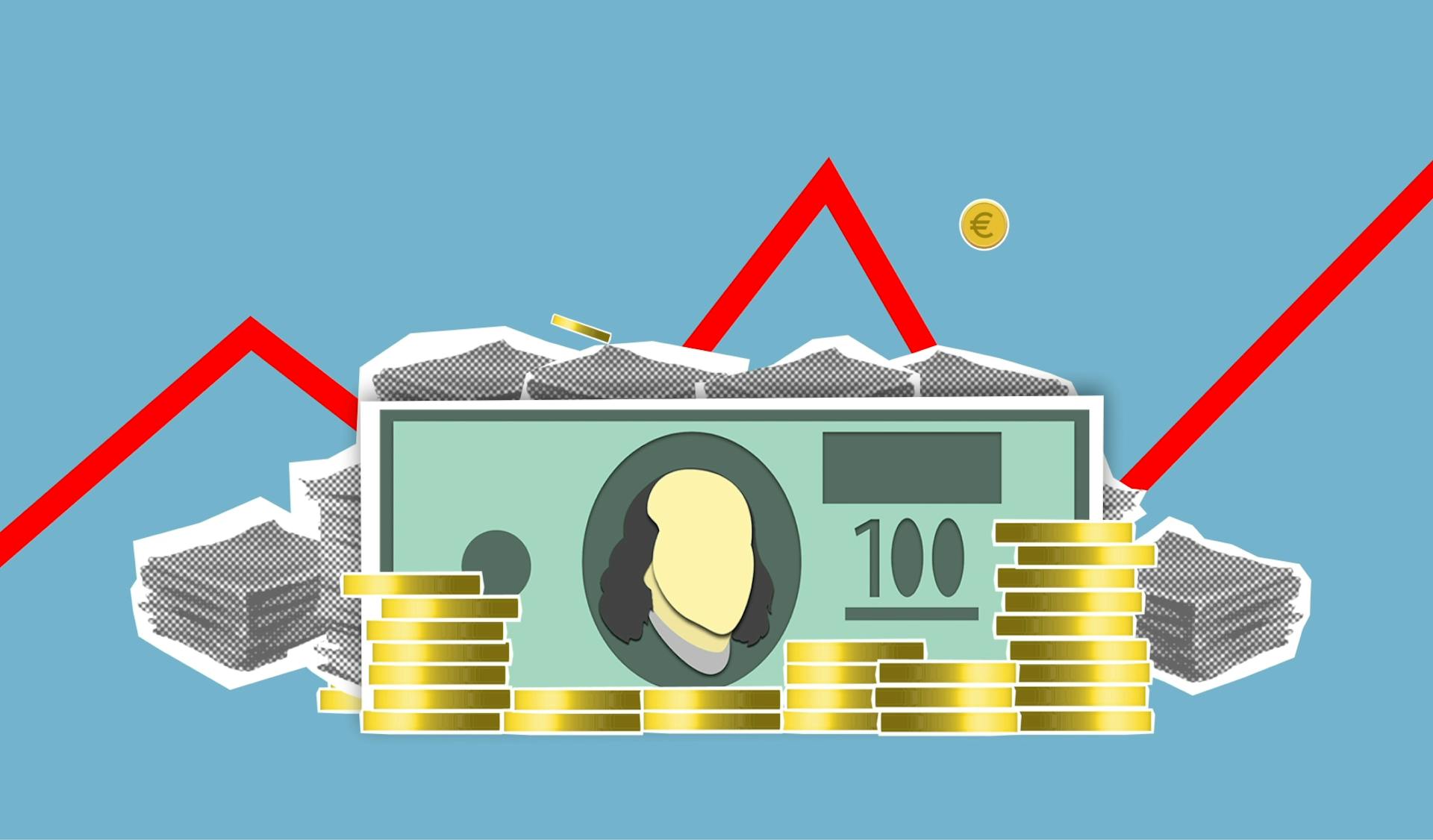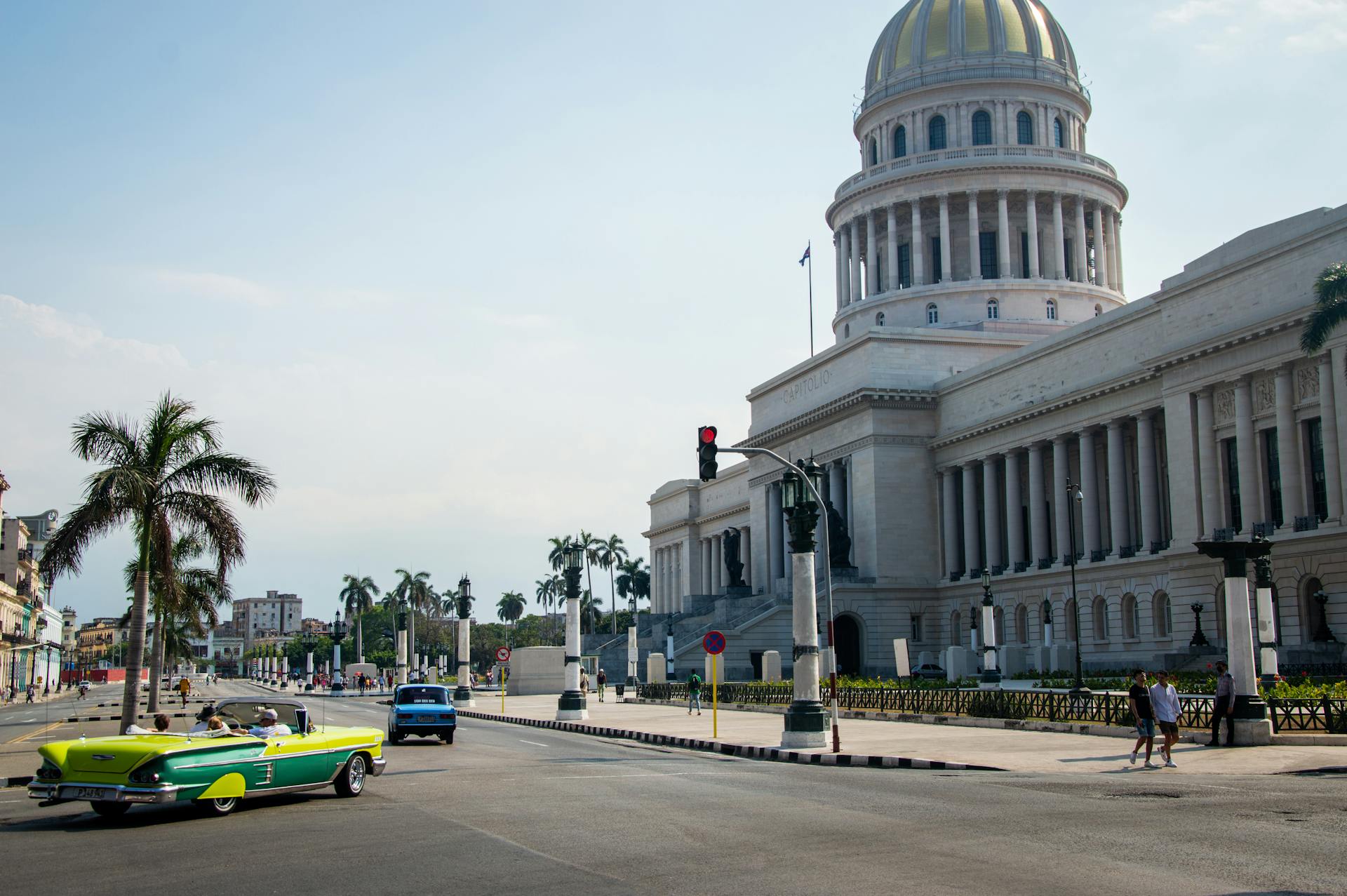
Washington D.C. is the capital of the United States, home to the country's most iconic landmarks and institutions.
The city was specifically designed to be the nation's capital, with Pierre Charles L'Enfant's 1791 plan creating a unique blend of grandeur and functionality. The National Mall is a prime example of this design, stretching from the Lincoln Memorial to the United States Capitol Building.
The United States Capitol Building is the seat of the U.S. Congress, where lawmakers come together to pass laws and make decisions for the country.
Recommended read: B Capital
USA Capital Overview
The United States Capitol is a magnificent building with a rich history. It's located in Washington, D.C.
The Capitol has undergone several transformations since its construction began in 1793. The original design was by William Thornton, but he had no knowledge of building technology, so the construction was initially supervised by Stephen Hallet, the runner-up in the competition.
The north wing, containing the Senate chamber, was completed first, in 1800. The south wing, containing the House of Representatives, was completed in 1807. The Capitol was later looted and burned by British troops during the War of 1812, but it was rebuilt and expanded over the years.
Here are some key facts about the Capitol's expansions:
- The south wing was extended in 1857 and the north wing in 1859 by architect Thomas Ustick Walter.
- The extensions provided more space for the increasing numbers of legislators from new states.
United States
The United States Capitol is a magnificent building, but its construction was a bit of a challenge. The initial supervisor, Stephen Hallet, tried to alter Thornton's plans, but he was quickly replaced by George Hadfield and then James Hoban, who designed the White House.
The north wing, containing the Senate chamber, was completed first, and Congress convened there in November 1800. The building's unique Corinthian-style columns, designed by Benjamin Latrobe, feature capitals depicting tobacco leaves and corn cobs.
The Capitol was looted and burned by British troops during the War of 1812, but Latrobe began reconstruction in 1815. Unfortunately, he resigned two years later, and it took Charles Bulfinch until 1827 to join the two wings and build the first copper-sheathed dome.
The Capitol's design has undergone several changes over the years. In 1850, Congress approved a competition for a design to expand both wings, and the winner, Thomas Ustick Walter, finished the extension of the south wing in 1857 and the north wing in 1859.
Readers also liked: First Eagle Investments
Here's a brief timeline of the Capitol's construction and expansion:
- 1800: North wing completed, Congress convenes
- 1807: South wing completed
- 1815: Latrobe begins reconstruction
- 1827: Bulfinch joins the two wings and builds the first copper-sheathed dome
- 1850: Competition for design to expand both wings
- 1857: Extension of south wing completed
- 1859: Extension of north wing completed
History
The Capitol building in Washington, DC, has a rich history dating back to the late 1700s.
Pierre Charles L’Enfant, a French engineer, designed the new capital city, and he envisioned the Capitol building as the most important structure, situated on Jenkins’ Hill, now known as Capitol Hill.
A design competition was held, but none of the 17 entries pleased the judges. That was until Dr. William Thornton submitted a neoclassical design, which was immediately approved.
The Capitol building was constructed with the help of enslaved people, who worked on quarrying stone and carving columns.
In 1800, the government moved into the building, which originally housed not only the House and Senate but also the Library of Congress and the Supreme Court.
The British burned the building in 1814 during the War of 1812, but it was rebuilt and continues to stand proud today.
The Capitol building has undergone changes over the years, with the Library of Congress and the Supreme Court relocating to nearby buildings in 1897 and 1935, respectively.
Today, the Capitol building remains a grand and historic tribute to American democracy.
The Capitol Building
The Capitol Building is a remarkable structure that serves as the seat of the US Congress. It has a large House of Representatives Chamber with 448 permanent seats.
The chamber is adorned with relief portraits of famous lawmakers and lawgivers throughout Western and Near Eastern history. These portraits include figures like George Mason, who contributed to the Virginia Declaration of Rights, and Hammurabi, who created the Code of Hammurabi.
The chamber also features a unique clock and the United States flag above the tribune. The United States national motto "In God We Trust" is written above the clock and above the flag.
House Chamber
The House Chamber is a grand space that can accommodate over 400 members of the House of Representatives, as well as guests and members of other branches of government. It's a large room with 448 permanent seats.
The chamber is adorned with relief portraits of influential lawmakers and lawgivers from Western and Near Eastern history. These portraits are a testament to the rich history of lawmaking and governance.
One of the most striking features of the chamber is the presence of Moses, who is sculpted from a full front view and situated across from the dais where the Speaker of the House sits. Moses is one of the few figures depicted in a full view.
Here's a list of some of the notable figures depicted in the chamber:
The chamber also features the United States national motto "In God We Trust" written over the tribune below the clock and above the United States flag.
Senate Chamber
The Senate Chamber is a grand space that's been in use since 1859, and one of the first things you'll notice is the impressive white marble busts of the former Presidents of the Senate, also known as Vice Presidents, that adorn the room.
These busts are a testament to the rich history of the Capitol Building, and they're definitely worth a closer look.
Features and Attractions
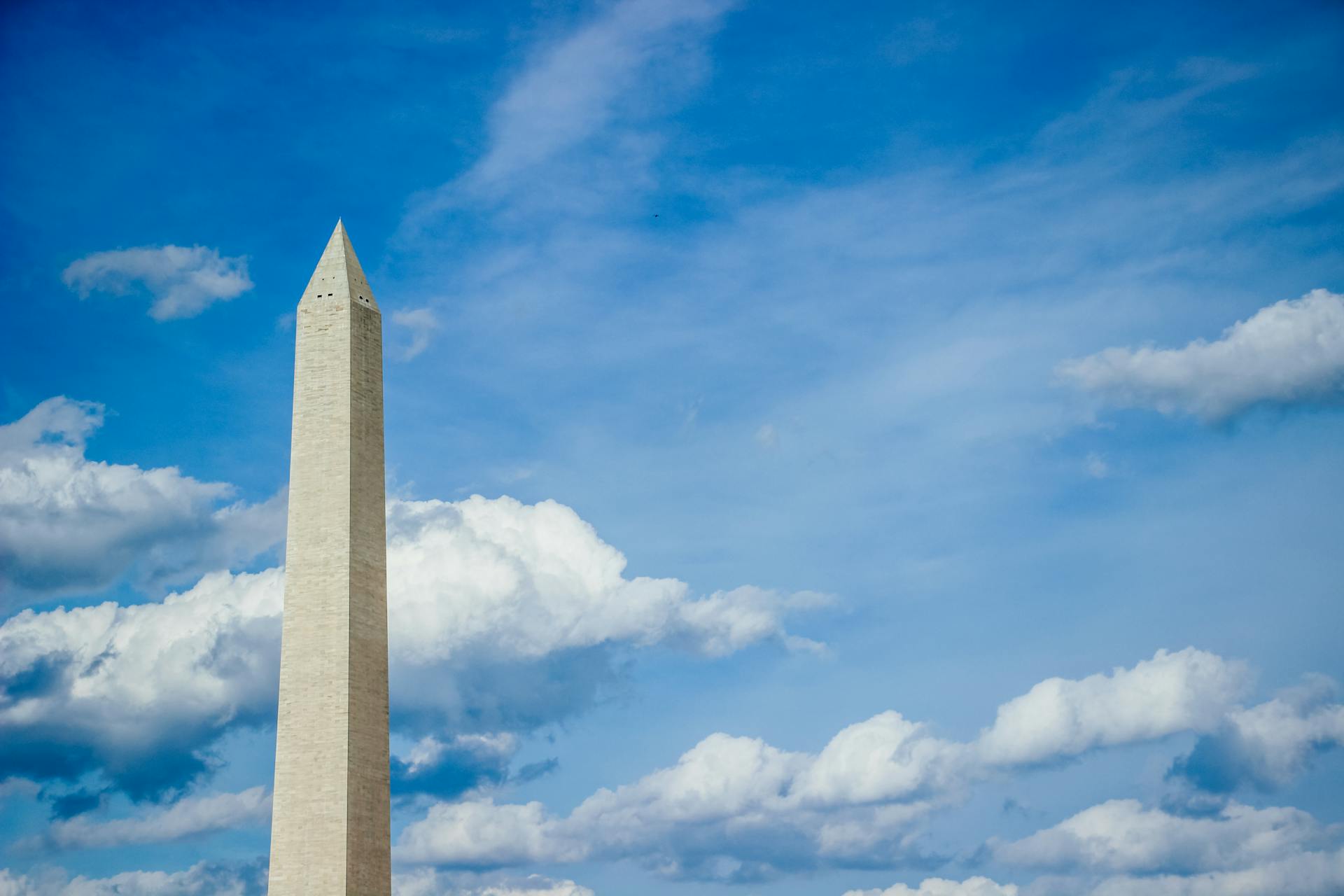
The United States Capitol building is an impressive structure with a rich history and plenty of interesting features. The Rotunda, where 13 presidents have lain in state, is a must-see.
The Capitol building also houses the Hall of Columns, featuring 28 fluted columns and statues from the National Statuary Hall Collection. If you're interested in the building's history, you can check out the Exhibition Hall of the Capitol Visitor Center, which displays the catafalque used for President Lincoln.
In addition to its historical significance, the Capitol building has some unique architectural features, such as the steep metal staircase with 365 steps, representing each day of the year, which leads from the basement to the outdoor walkway on top of the dome.
Washington Dc Attractions
The U.S. Capitol in Washington D.C. is a must-visit attraction for anyone interested in history and politics. The majestic Rotunda is a stunning sight to behold, having held public viewings for 13 presidents, most recently Jimmy Carter.
The Rotunda also houses the catafalque, a structure used to support coffins lying in state or honor, which was originally meant for President Washington. The catafalque now on display in the Exhibition Hall of the Capitol Visitor Center was actually used for President Lincoln.
You can explore the rich heritage within the Capitol's halls and view exquisite art, including the 28 fluted columns and statues from the National Statuary Hall Collection. The Hall of Columns is located on the House side of the Capitol.
The Capitol building even has a spa-like facility that's hard to believe existed, the Senate baths, which featured marble bathtubs, a barbershop, and a massage parlor. These facilities were a luxury for members of Congress and their guests before modern plumbing became widespread.
For a unique experience, take the 365-step staircase from the basement to the outdoor walkway on top of the Capitol's dome. This staircase represents each day of the year, making it a memorable and challenging climb.
The U.S. Capitol is also home to the National Statuary Hall, a chamber devoted to sculptures of prominent Americans. This historic hall was the meeting place of the U.S. House of Representatives for nearly 50 years.
Intriguing read: Union National Bank
Visitor Center
The Visitor Center is a must-visit attraction at the U.S. Capitol in Washington DC.
Located below the East Front Plaza between Constitution and Independence Avenues, the entrance to the Visitor Center is easily accessible. The Visitor Center opened on December 2, 2008, and provides a single security checkpoint for all visitors, including those with disabilities.
Be prepared for long lines during peak tourist seasons, but don't worry, audio tours are available in several languages to help you navigate the complex. All visitors are required to pass through a security checkpoint, so be aware of the Capitol's list of prohibited items, which includes pointed objects, food, liquids, and large bags or backpacks.
The Visitor Center is an impressive complex, with 580,000 square feet of space on three floors. It features a food court, restrooms, and educational exhibits, including an 11-foot scale model of the Capitol dome.
Parking & Transportation
Getting to the Capitol is easier than you think.
There is very limited public parking near the Capitol, so it's best to leave your car behind.
Ride a tour bus or use public transportation to get to the Capitol - it's a convenient and hassle-free option.
Three Metro subway stops, Union Station, Capitol South, and Federal Center SW, are within walking distance of the Capitol.
You can easily get to the Capitol without a car, making it a more enjoyable experience for everyone.
Rebuilding Post-War
The Capitol Building was torched by the British during the War of 1812, but a fortuitous rainstorm prevented its total destruction.
Benjamin Latrobe was hired to oversee the rebuilding of the Capitol, but he was eventually replaced by Charles Bulfinch in 1818.
Bulfinch completed the areas of the building that accommodated the House, Senate, and Supreme Court, and he designed and built the Capitol's original wooden dome.
The Capitol Building took a lot of damage, but it's amazing to see how it was rebuilt and restored over the years.
Design and Architecture
The Capitol's design and architecture are truly breathtaking. The 1850 expansion more than doubled the length of the building, making the original dome look tiny in comparison.
The original dome, designed by Charles Bulfinch, was a copper-sheeted, low dome that was no longer in proportion with the increased size of the building. It was eventually torn down and replaced with the iconic cast-iron dome designed by Thomas U. Walter.
Walter's dome is a masterpiece, standing three times the height of the original dome and 100 feet in diameter, yet it's supported on the existing masonry piers. The dome's cast iron frame weighs a staggering 8,909,200 pounds.
The dome's design draws inspiration from other notable buildings, including the dome of St. Peter's Basilica in the Vatican and St. Paul's Cathedral in London.
Dome
The Capitol dome is a stunning feature of the United States Capitol building, and it's worth taking a closer look.
The original dome, designed by Charles Bulfinch in 1818, was replaced in 1855 with a new, cast-iron dome designed by Thomas U. Walter. This new dome stands three times the height of the original and is 100 feet in diameter.
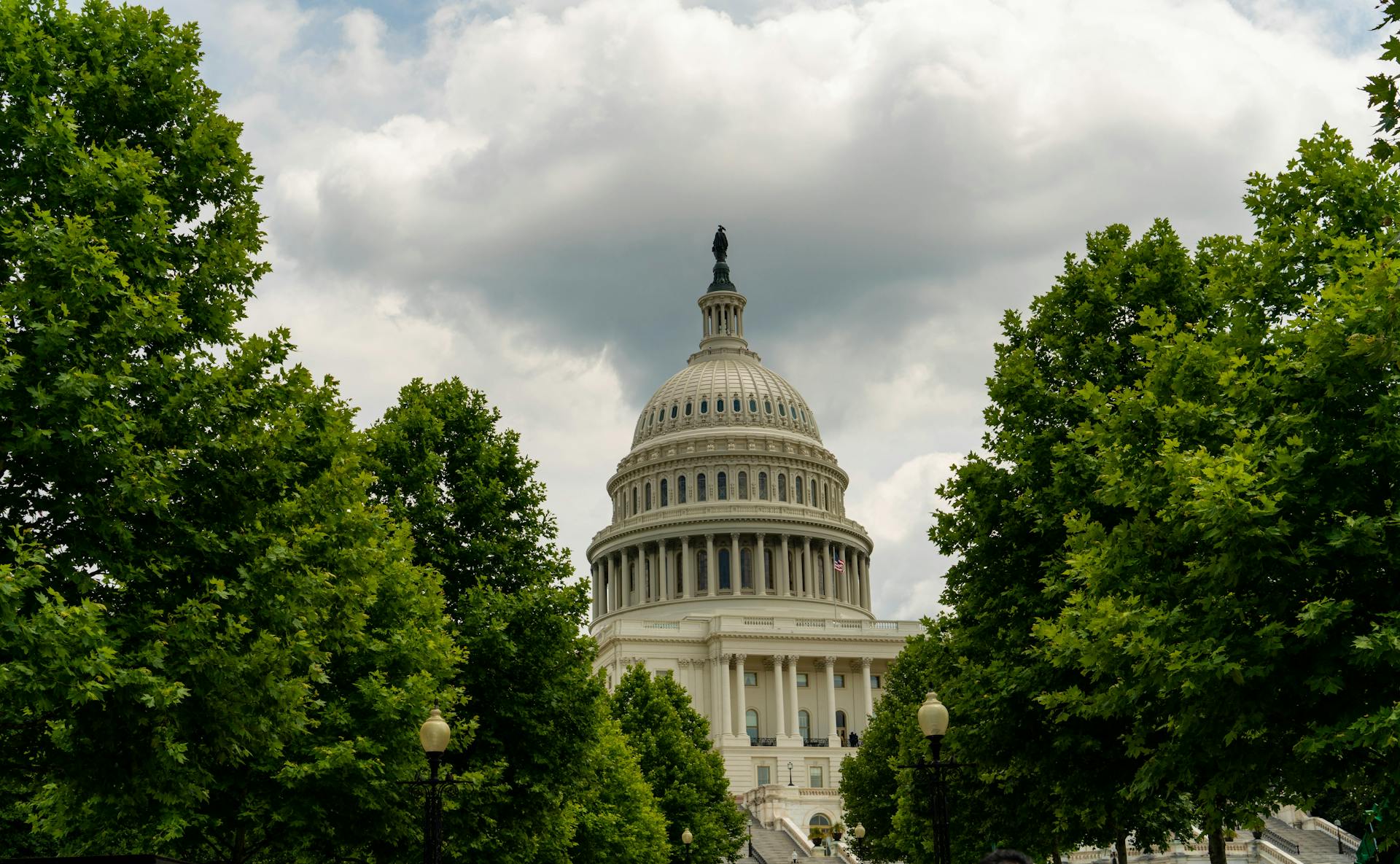
The new dome is a masterpiece of engineering, weighing in at 8,909,200 pounds of cast iron. It's supported by existing masonry piers and features a large oculus in the inner dome, through which you can see The Apotheosis of Washington painted on a shell suspended from the supporting ribs.
The dome's design was influenced by Mansart's dome at Les Invalides in Paris, which Walter had visited in 1838. This is evident in the double dome structure and the use of a tholos to support the Statue of Freedom.
The Statue of Freedom, a colossal statue that was raised to the top of the dome in 1863, invokes the goddesses Minerva or Athena. It's a fitting tribute to the building's rich history and symbolism.
The cast iron for the dome was supplied and constructed by the iron foundry Janes, Fowler, Kirtland & Co. The thirty-six Corinthian columns that surround the base of the dome were provided by the Baltimore ironworks of Poole & Hunt.
The dome's massive visual weight has had an impact on the surrounding architecture, overpowering the proportions of the columns of the East Portico, built in 1828.
The Rotunda
The Rotunda is a grandiose space that's the heart of the Capitol building. It's where both sides of Congress come together to celebrate new bills or receive esteemed visitors.
This impressive room is also where important people lie in state or in honor, with only 40 individuals holding this distinction so far. Abraham Lincoln, Ruth Bader Ginsberg, and two Capitol police officers killed in the January 6 insurrection are among those who have been honored in this way.
The fresco inside the dome above is a stunning piece of art, titled "Apotheosis of Washington" and created by Constantino Brumidi. It depicts George Washington in the heavens, surrounded by the goddesses Liberty and Victory, and 13 maidens representing the original 13 colonies.
Four revolutionary period scenes and four scenes of early exploration decorate the walls, adding to the Rotunda's sense of history and grandeur. Most of the statues and busts are of presidents, including a notable sculpture of Abraham Lincoln by Vinnie Ream, the first woman artist to receive a federal government commission.
The Rotunda's unique acoustic effect is also worth noting, as it amplifies the voice of a speaker so that it sounds as though they're standing right next to you, even if they're yards away. This makes it an ideal space for speeches and other important announcements.
For another approach, see: Space Capital
U.S. Building Designer
The U.S. Capitol building was designed by Dr. William Thornton, blending neoclassical elements that symbolize democracy and freedom in its architecture.
Dr. Thornton's design for the U.S. Capitol is a masterpiece of neoclassical architecture.
Interesting Facts
The USA Capital is a city steeped in history and politics.
The iconic Capitol Building is a must-visit attraction, and did you know that the white light atop the dome is on at night if the House, Senate, or both are working, it's called a Convene or Session light.
Tours of the Capitol Building are free, but you'll need to obtain a pass to get in.
You can also catch a glimpse of the building's stunning architecture and learn more about its history by taking a guided tour.
The Capitol Building's architecture is a mix of Greek and Roman styles, with a grand dome that's a symbol of American democracy.
Frequently Asked Questions
Is Washington, D.C. our capitol or capital?
Washington, D.C. is the capital city of the United States, serving as the country's central hub of government. It's officially known as the District of Columbia, but often referred to simply as Washington or D.C.
Sources
- https://www.britannica.com/topic/United-States-Capitol
- https://en.wikipedia.org/wiki/United_States_Capitol
- https://www.trolleytours.com/washington-dc/us-capitol
- https://bensguide.gpo.gov/j-us-capitol
- https://www.lonelyplanet.com/usa/washington-dc/capitol-hill-south-dc/attractions/us-capitol/a/poi-sig/385385/1329650
Featured Images: pexels.com
